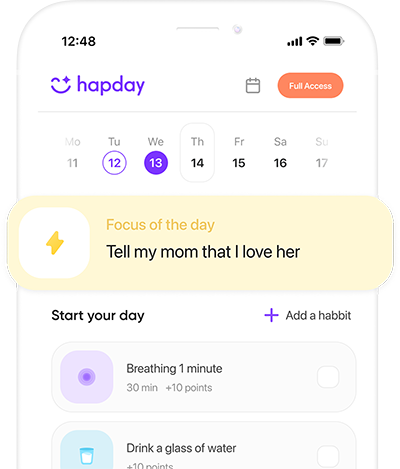Post-Traumatic Stress Disorder (PTSD) is a mental health condition that can develop after experiencing or witnessing a traumatic event. These events might include natural disasters, serious accidents, terrorist acts, war, combat, or personal assaults. For those affected, PTSD can cause nightmares, flashbacks, severe anxiety, and intrusive thoughts about the event. However, recovery is possible, and cultivating resilience—the ability to bounce back from adversity—is a critical part of the process.
Table of Contents
- Understanding PTSD
- The Role of Resilience in Recovery
- Strategies to Cultivate Resilience
- The Importance of Patience and Persistence
- Final Thoughts
Understanding PTSD
Before we dive into building resilience, it’s essential to understand what PTSD entails. The American Psychiatric Association’s Diagnostic and Statistical Manual of Mental Disorders, Fifth Edition (DSM-5) breaks down PTSD symptoms into four main categories:
- Intrusive Thoughts: This includes involuntary memories, distressing dreams, or vivid flashbacks of the trauma.
- Avoidance: Steering clear of reminders such as people, places, or activities that are linked to the trauma.
- Negative Cognition and Mood Changes: Persistent negative thoughts, ongoing fear, anger, guilt, or feeling detached from others.
- Heightened Arousal and Reactivity: Being easily startled, feeling tense, and having bouts of anger.
The U.S. Department of Veterans Affairs reports that around 6% of the U.S. population will grapple with PTSD at some point in their lives.
The Role of Resilience in Recovery
Resilience is our capacity to adapt to difficult situations, recover from setbacks, and return to a sense of well-being. A resilient person can effectively manage stress, maintain a positive outlook, and keep moving forward despite challenges. Numerous studies highlight resilience as a key factor in overcoming PTSD. It’s important to note that resilience doesn’t mean being immune to stress or emotional pain; rather, it’s about developing healthy coping mechanisms.
Strategies to Cultivate Resilience
Therapeutic Interventions
- Cognitive Behavioral Therapy (CBT): CBT is one of the most effective treatments for PTSD, focusing on altering negative thoughts associated with trauma. A 2015 meta-analysis in Psychological Medicine underscores its success in alleviating PTSD symptoms.
- Eye Movement Desensitization and Reprocessing (EMDR): This therapy involves recalling distressing images while following a series of guided eye movements. A comprehensive review from 2014 in the Journal of EMDR Practice and Research supports EMDR’s effectiveness in reducing PTSD symptoms.
- Mindfulness-Based Therapies: These teach individuals to focus on the present moment without judgment. Research, such as a 2013 study in Depression and Anxiety, shows mindfulness can substantially reduce PTSD symptoms.
Building a Supportive Community
Social support is pivotal to building resilience. A 2015 study in Psychiatry Research found that strong social networks are linked to fewer PTSD symptoms. Friends, family, and support groups provide emotional backing, practical help, and guidance. Participating in community activities can foster a sense of belonging and counter feelings of isolation.
Enhancing Physical Health and Well-being
- Exercise: Regular physical activity not only boosts physical health but also mental well-being. A 2018 study in the Journal of Clinical Psychology highlighted that exercise can mitigate PTSD symptoms and enhance resilience by releasing endorphins and reducing stress hormones.
- Nutrition: Consuming a balanced diet can influence stress management and overall well-being. The Mediterranean diet, rich in fruits, vegetables, and lean proteins, is linked to better mental health, as noted in a 2014 BMC Medicine study.
- Sleep Hygiene: Quality sleep is essential for recovery. A consistent sleep schedule, paired with a relaxing bedtime routine, improves sleep quality. Lack of sleep can exacerbate PTSD symptoms, making resilience-building more challenging.
Developing Personal Strengths
- Self-Efficacy: Believing in one’s ability to succeed is crucial. A 2016 study in Behavior Research and Therapy emphasizes that boosting self-efficacy is tied to reduced PTSD symptoms.
- Problem-Solving Skills: Effective problem-solving skills help individuals regain control over their lives. A 2017 study in Cognitive Therapy and Research found a link between strong problem-solving tactics and heightened resilience.
Spiritual and Meaning-Making Practices
Spirituality and finding meaning in life can enhance resilience. According to a 2018 study in Psychology of Religion and Spirituality, spiritual practices offer comfort, hope, and purpose.
Acceptance and Commitment Therapy (ACT)
ACT encourages individuals to accept difficult emotions and commit to actions aligned with personal values. A 2015 study in Behavior Modification notes that ACT can notably reduce PTSD symptoms and boost psychological flexibility, a key resilience component.
Art and Expressive Therapies
Creative outlets such as art, music, or writing can be therapeutic. A 2019 study in The Arts in Psychotherapy found that art therapy can significantly help reduce PTSD symptoms and foster emotional healing.
Technology-Assisted Interventions
Technology offers new ways to support mental health. Mobile apps and online platforms are available to provide resources and guided practices. A 2020 review in the Journal of Medical Internet Research found digital interventions to be effective complements to PTSD treatment.
The Importance of Patience and Persistence
Building resilience is a journey, not a destination. It requires ongoing effort and patience, and setbacks are a natural part of the process. Celebrating small victories and staying committed to personal growth is vital.
Final Thoughts
Recovering from PTSD is complex, involving emotional, psychological, and social aspects of life. Cultivating resilience allows individuals to reclaim their lives post-trauma. With the right strategies and support, not only can individuals survive, but they can thrive. Seeking professional help and connecting with peers can significantly boost hope and facilitate recovery. Remember, the journey is yours—embrace it with patience and persistence.



This article is incredibly informative! I had no idea that strategies like mindfulness and exercise could really make such a difference in managing PTSD symptoms. It’s great to know that recovery is possible and that cultivating resilience can lead to a more fulfilling life. Thanks for sharing these insights!
I agree! I’ve been using mindfulness techniques, and they have helped me stay grounded. It’s fascinating how simple practices can lead to significant changes.
Can you share more personal experiences about using these strategies? I’d love to hear how others have found success!
While the article covers some good points, I think it’s important to recognize that not everyone finds traditional therapies like CBT or EMDR effective. It can be frustrating when you feel like you’re doing everything ‘right’ and still struggle.
I’m so glad this topic is being discussed! The emphasis on building a supportive community really resonates with me. I’ve found that sharing experiences with others who understand makes a huge difference in the healing process.
‘Absolutely! Being part of a support group has helped me feel less isolated. We need to talk more about the importance of community in recovery.
‘It’s interesting how our physical health ties into mental well-being. I’ve noticed when I exercise regularly, my mood improves significantly, which makes sense based on what the article says about endorphins.’
‘I appreciated the mention of patience in recovery. It’s easy to get discouraged when progress feels slow, but knowing it’s part of the journey helps keep me motivated.’
‘Exactly! Celebrating small victories has been my strategy too; it reminds us that every step counts!’
I find it intriguing how technology is now being incorporated into mental health treatments! Mobile apps are a convenient way for many people to access help without feeling overwhelmed by traditional therapy settings.
After reading this, I’m curious about exploring art therapy! Using creativity seems like such a fun way to heal while expressing emotions.
Thank you for shedding light on this important topic! It gives hope to those dealing with PTSD that resilience can be cultivated.
This was enlightening! But seriously, patience? That’s like asking kids not to open their Christmas presents early!
Overall, this article highlights valuable strategies for resilience building—definitely something worth considering for anyone struggling with PTSD.
I found this article to be incredibly informative. The breakdown of PTSD symptoms was clear and detailed. It’s refreshing to see such a comprehensive approach to mental health issues. Understanding that resilience plays a key role in recovery is something everyone should acknowledge. This knowledge could change lives for the better.
I completely agree, CuriousCat! It’s important for people to recognize that recovery is possible and that understanding the symptoms is the first step towards healing.
While the information is good, I feel like it’s a bit oversimplified. Not everyone has access to therapy or support networks, so not everyone can cultivate resilience as easily as suggested.
This article feels overly optimistic about PTSD recovery. It glosses over how difficult it can be for many individuals to find help or even recognize their condition. Just saying ‘resilience’ won’t magically solve deep-rooted issues many face after trauma.
The statistics provided are quite eye-opening, particularly about how common PTSD can be among the population. It’s essential that articles like this raise awareness and educate readers on recognizing symptoms early on to seek help sooner rather than later.
“Recovery is possible” sounds great in theory, but I think it’s naive to assume everyone will respond the same way to therapies like CBT or EMDR. Personal circumstances vary widely, which means that some might not see results no matter how hard they try.
“You make an excellent point, DebatingDerek! Different approaches work for different people, and not everyone has access or resources for these treatments.”
“While I understand your concerns, it’s still vital we promote hope and options available for those struggling with PTSD!”
Who knew building resilience was like assembling IKEA furniture? You need instructions (like CBT) and sometimes you still end up with spare parts! In all seriousness though, I’m glad this article highlights multiple approaches to tackle PTSD—it’s like having a toolbox instead of just one hammer!
“Great analogy, HumorHeidi! But remember, sometimes it takes more than just tools; you need patience too!”
“Or maybe we just need someone who actually knows how IKEA furniture works! But yes—variety in treatment approaches is definitely a plus.”
The inclusion of technology-assisted interventions really stood out to me in this article! In today’s digital age, leveraging mobile apps can provide necessary support for individuals dealing with PTSD at their own pace—definitely a game changer!
Absolutely InformedIsabella! Technology opens doors that traditional methods might not reach—it’s fantastic!
This article really resonates with me. Understanding PTSD is the first step towards healing, and I love how you emphasize resilience as a key factor in recovery. It’s empowering to think that while the trauma may stay with us, we have the power to rebuild our lives.
I appreciate the detailed strategies for cultivating resilience! However, I wonder if there are any specific examples of how people have successfully used these methods in their recovery journey. It would be great to hear some personal stories!
Such an informative read! I had no idea that physical activity could help with PTSD symptoms. It’s nice to know that something as simple as exercise can have such a profound impact on mental health.
While I see the value in resilience, isn’t it oversimplifying PTSD? Not everyone can bounce back quickly or easily. Some people face lifelong challenges after trauma. We should be cautious about suggesting that anyone can just ‘get over it’ with enough effort.
@SkepticalSara, I see your point, but I think the article is advocating for resilience as one part of a larger recovery process rather than suggesting it’s a cure-all.
@SkepticalSara, I agree with you! Recovery is complex and personal; sharing strategies like these can help some people but not everyone has the same journey.
“Cultivating resilience” is such an inspiring concept! It reminds me that even when life throws curveballs our way, we can find ways to rise above and thrive again. I’m curious if there are any community resources mentioned that could help those struggling with PTSD.